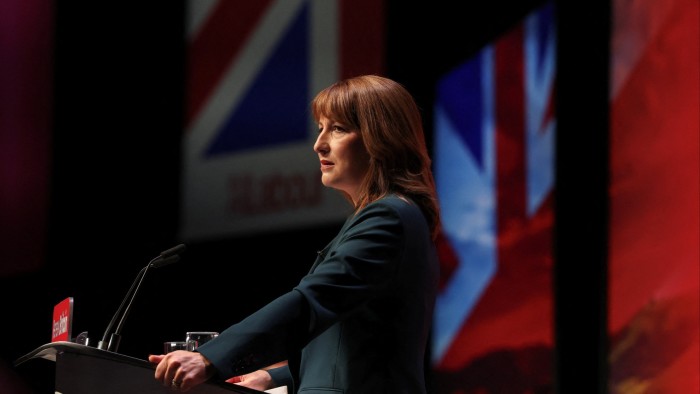Unlock the Editor’s Digest for free
Roula Khalaf, Editor of the FT, selects her favourite stories in this weekly newsletter.
The writer is a former chancellor of the exchequer
Bill Clinton once said, “deal with the headlines, but never forget the trend lines”. When it comes to the November Budget, the big trend line shaping the chancellor’s unenviable choices is one that is not being talked about enough, namely debt.
Headlines have focused on headroom and tax rises. But the root cause of the difficult choices is debt that is now around 100 per cent of GDP. A large government debt can be managed if the economy is growing and interest rates are low. Unfortunately, Rachel Reeves and I are the first chancellors in modern times to have to deal with the opposite: low growth and high interest rates. Unless there is a plan to deal with that debt, Budgets will continue to be a nightmare.
Others are in the same boat: across the OECD, debt has risen from an average of 70 per cent of GDP to 110 per cent since the global financial crisis, with interest rates up by an average 3 percentage points since 2020. But the situation is worse in the UK, where the average household now pays £3,900 in tax just to fund debt interest. That’s more than we pay for the police, schools or defence. Only American households pay more — but with much higher incomes to offset it against. By contrast, thrifty German households, where net debt is nearly half our level, pay just under €800 a year.
One reason we pay more in the UK is that we have the highest debt interest costs in the G7. France, despite a worse fiscal position, is protected by having the same currency as low-debt Germany. The US is helped by being the world’s reserve currency. Japan’s high debt is largely owed to domestic savers. It isn’t just expensive for UK taxpayers, it also damages our growth: money spent on debt interest does little to generate either investment or consumption in the economy. We end up trapped in a debt doom loop.
Reeves is right to want to give confidence to markets by stressing her commitment to fiscal rules. More debatable is the way she has changed those rules to allow even more borrowing. Ordinarily, borrowing to fund economic infrastructure makes sense because it unlocks growth in a way that pays for itself. But the result has been an increase in borrowing of £142bn over five years compared with previous plans, of which more than half is likely to go on current spend. That simply adds to the deadweight drag of higher debt interest.
What are the solutions? One is to make improvements to the fiscal rules so they really do ensure debt falls over time as a proportion of GDP. The best change would be a fiscal rule committing — credibly — to public spending that over a cycle will always grow more slowly than economic growth. I know, I know — I didn’t introduce such a fiscal rule myself. But at risk of being Captain Hindsight, former chancellors must be given some space to learn from experience.
The second solution is something I am sure the chancellor wants to do. That is to show markets there really is a credible plan to unlock growth. But to be convincing, that will require much more boldness in areas like planning reform, public-sector productivity, welfare reform and energy market reform.
In planning reform, that might perhaps mean a two-year limit on the time it takes to get full approval for nationally significant infrastructure. Doing so would unlock tens of billions of additional investment in UK infrastructure from sovereign wealth funds and global pension funds — not least to fund quicker grid connections much needed for clean energy projects. Labour’s reforms are already adding 0.2 per cent to GDP growth in 2029 but an extra, say, £60bn of investment would double that.
Then there is welfare. Should we not remove mild mental health conditions from the benefits assessment process and replace them with guaranteed rapid treatment, at a fraction of the cost? Helping just 100,000 more people a year back into work adds 0.3 per cent to our national annual growth as well as shrinking the benefits bill. Surely, too, there is no justification for new entrants to the civil service being enrolled into the defined benefit schemes that add to our largely unfunded pension liabilities?
Or take energy. Existing research suggests a 10 per cent reduction in energy costs could add 0.15 per cent to annual GDP growth. Last year we wasted £1.5 billion on “constraint payments” for energy we don’t actually use — removing such inefficiencies and cutting red tape that stops grid investment ought to get us there.
None of these reforms are easy. But crucially they are all quantifiable. That means they could be “scored” by the Office for Budget Responsibility. Higher output would reduce the need for tax rises and would reduce debt as a proportion of GDP. We could then replace a debt doom loop with a positive feedback loop in which higher growth started to reduce the pressure on public finances. Being chancellor is one of the toughest jobs in government, but that might make it a little more bearable.

